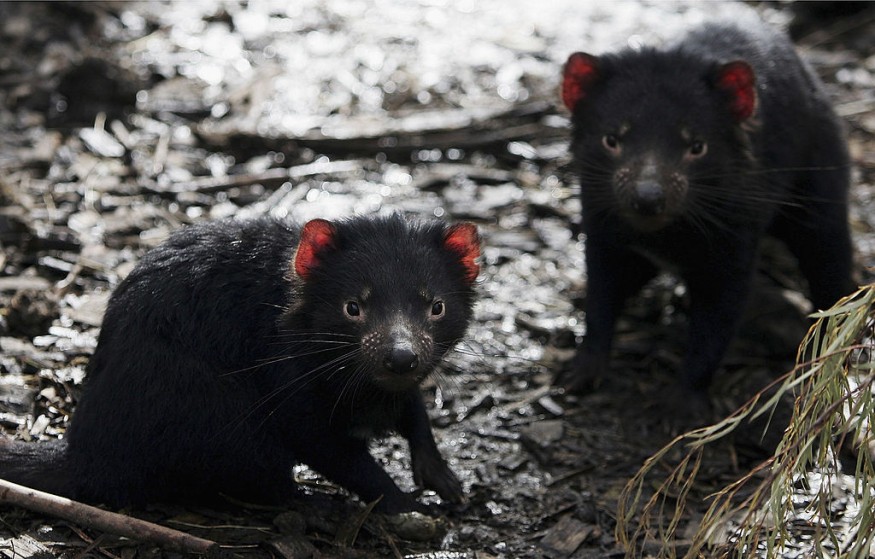In one of Sussan Ley's final acts as environment minister, the Coalition withdrew recovery plans to save nearly 180 vulnerable species and ecosystems, including the Tasmanian devil.

Last year, the Morrison government proposed eliminating the requirement for 185 plants, animals, and ecosystems to have a legal plan, including numerous plans that had been years in the making.
After the election was called in April, Ley signed off on measures to eliminate the criteria for 176 species and ecosystems.
Despite a government request for comment garnering 6,701 replies, all negative, Ley made a choice.
The Wilderness Society's policy and strategy manager, Tim Beshara, branded the outgoing minister's decision "disgraceful" and expressed optimism that Tanya Plibersek, the current environment and water minister, will reconsider it.
"On what kind of world does the Commonwealth believe it doesn't require a recovery plan for the severely endangered Christmas Island flying fox, a species fully under Commonwealth management and one of Australia's most likely next extinctions?" he said.
Also Read: Human's Appetite For Egg Drove this Giant Australian Birds to Extinction
The environment minister has discretion over whether a recovery plan is required, but when it is, ministers are legally committed not to make decisions that are inconsistent with the plan.
"This is disturbing," Plibersek remarked in response to Ley's decision on Thursday. I've requested an urgent briefing from my new department."
Last year, conservationists reacted angrily to a proposal to abandon over 200 flora and animals plans after the threatened species scientific committee (TSSC) examined recovery plans.
The critically endangered nightcap oak was impacted by the 2019-20 bushfires, the critically endangered Cumberland Plain woodland, which is regularly cleared for development in western Sydney, and several Christmas Island species, including the critically endangered Christmas Island flying fox, are among the 176 species listed.
In her publicly available explanations for each choice, the minister stated that she had accepted the scientific committee's advice and concluded that a recovery plan would "not provide a major conservation planning advantage" over and above other measures currently in place.
Conservation Plans
Conservation advice is a comparable document that all affected species and habitats have, but it is not legally enforceable in the same way that recovery plans are.
Helene Marsh, the chair of the TSSC, has previously stated that recovery planning is unproductive, with plans frequently being underfunded and measures going unimplemented, and that conservation advice may often be updated more swiftly following calamities like bushfires.
While Environment Minister, Sussan Ley showed a callous disregard for threatened species - including our own. She failed to protect our children's futures.
— Dr Monique Ryan MP (@Mon4Kooyong) June 1, 2022
Tanya Plibersek has to address these issues as a matter of urgency. #Mon4Kooyong #auspol https://t.co/oHevLwsHjf
Labor committed $224.5 million for a national endangered species program before the election, which would entail tackling a backlog of long-overdue and outmoded recovery plans.
Conservation organizations have welcomed the selection of Plibersek, one of Labor's most experienced ministers, to the environment and water portfolio, considering the magnitude of reform that has been recognized as essential to reverse Australia's environmental deterioration.
The Australian Conservation Foundation's Sophie Power said Ley's decision was unfortunate and that environmental organizations would raise it with the next minister.
The spectacled flying fox and the golden sun moth were among the nine species that Ley - now the deputy Liberal leader - determined required a recovery strategy.

Because she is no longer in charge of the portfolio, her office sent queries to the environment department. According to an environment department official, the previous minister had followed the scientific committee's advice in each case.
Last year, the TSSC assessed recovery plans for 914 endangered species and ecosystems, determining that 676 no longer required one. The 185 was the first installment of what was to be a larger plan.
The scientific committee's goal, according to the spokesman, is to "ensure that all listed species and ecological ecosystems have fit-for-purpose strategies to promote their recovery."
For more Environmental News, don't forget to follow Nature World News!
© 2025 NatureWorldNews.com All rights reserved. Do not reproduce without permission.





